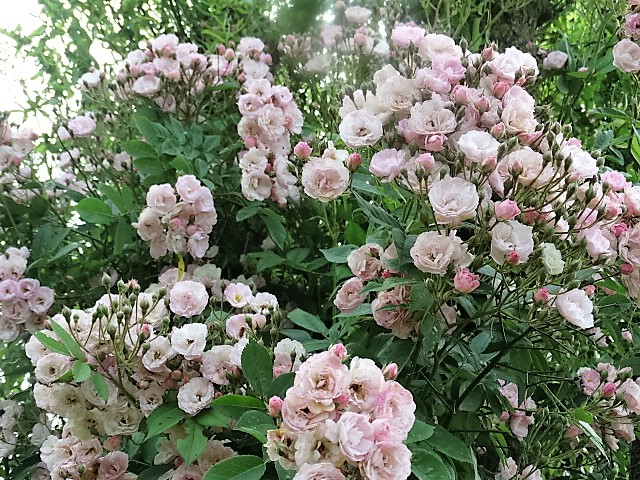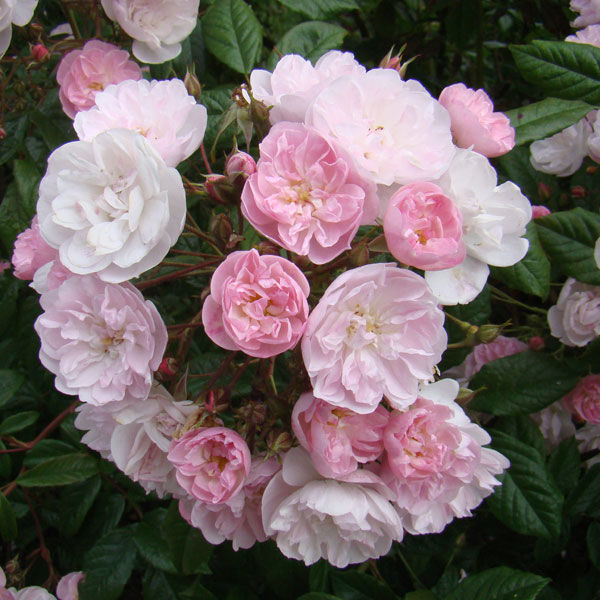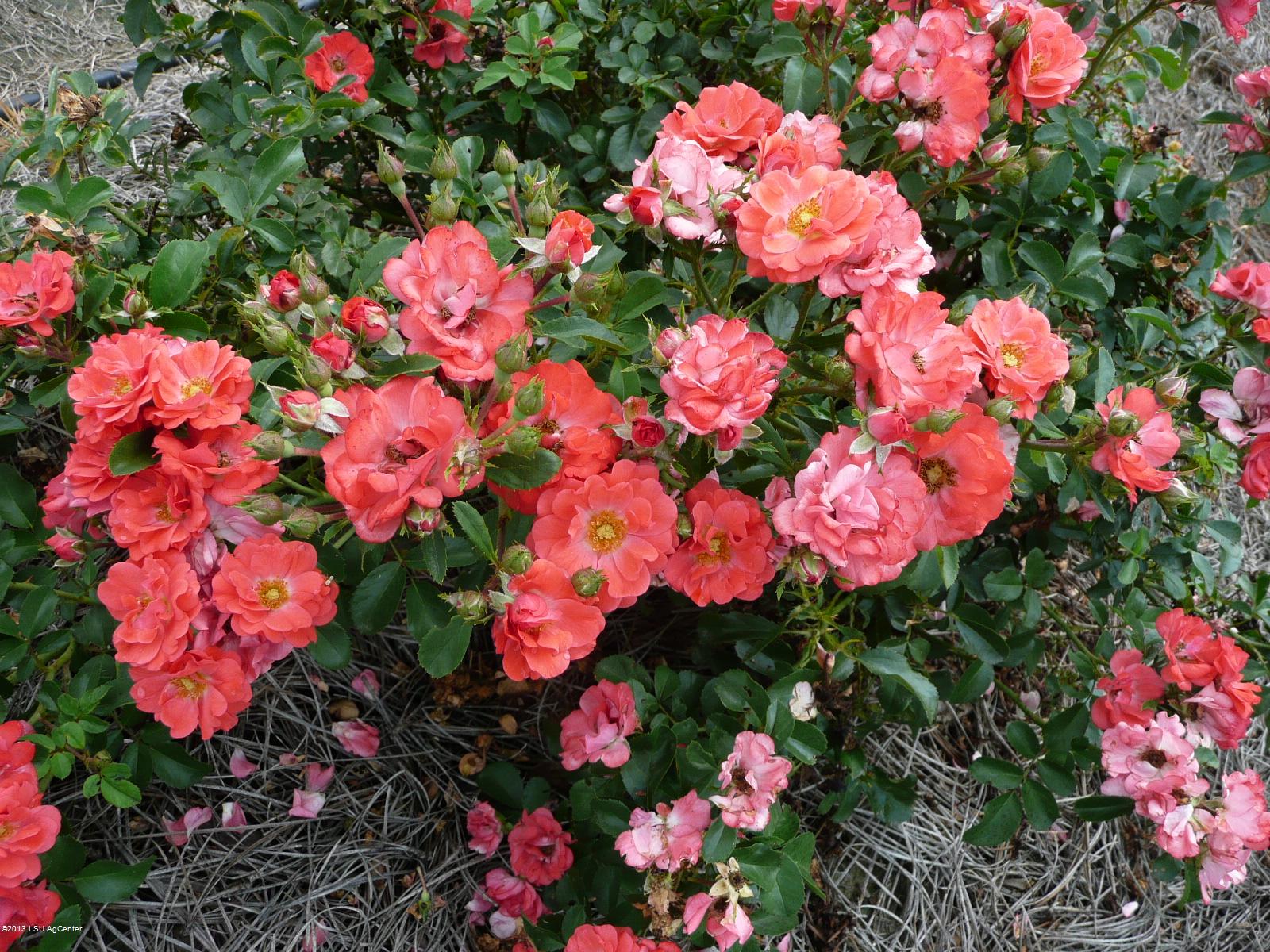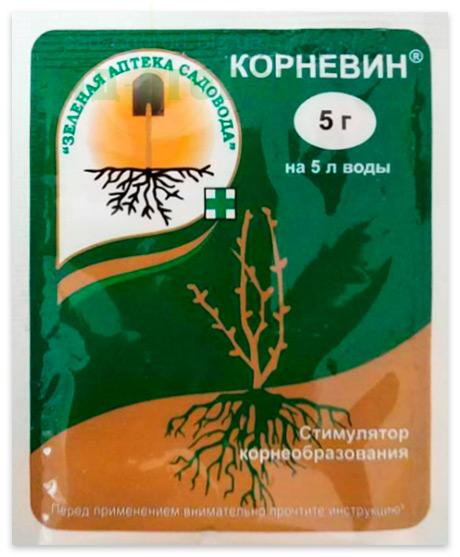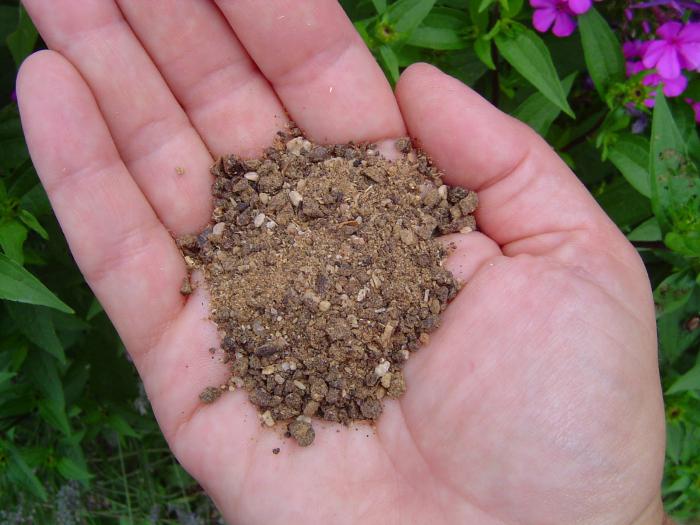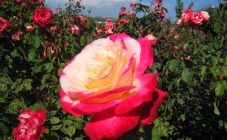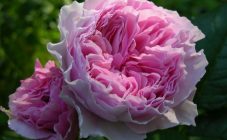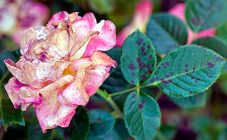Content:
Coral roses always attract people's attention. Their colorful, positive colors bring optimism and good mood. They say that if a man presents such flowers to his beloved woman, he expresses admiration and gratitude to her. By the way, this speaks of his warm feelings and love, hope for further relationship. He kind of asks permission for this.
Every flower lover has every reason to have these beautiful flowers in the garden. Among the whole variety of roses of such colors, three of the brightest representatives stand out.
Description of coral roses
Rose Coral Reef (Ecuador)
Florists consider the plant to be a real miracle of nature. The height of the bush is 100 - 120 cm. The flowers of the culture are large (12 cm), spherical, double, fragrant.
Their petals are multicolored. The petals are painted at the edges in dark pink tones, gradually turning into orange shades. At the bases, they are juicy yellow.
The culture is highly resistant to diseases, good frost resistance. Flowers are perfectly combined with any plants.
Rose Surprise
This flower culture was created in 1966 by Doctor of Biological Sciences Zinaida Konstantinovna Klimenko. In the 80s, the variety was incredibly popular in the south of Russia. The Latin name of the variety is Surprise Rose.
The bush is slender, slightly spreading. Its height is 60 - 80 cm, girth is 60 cm. The leaves are dark green, leathery. The buds are oblong.
The flowers are large (11 - 12 cm), cupped, slightly double (20 - 25 petals), coral pink, exude a fruity aroma. Collected flowers on stems of 3 - 5 pieces.
The culture is characterized by high frost resistance (zone 6), good resistance to powdery mildew, black spot, and rain.
The Surprise rose blooms in early June. Blooms profusely, for a long time (at least 90 days), until late autumn. Blooms on 1 bush up to 120 buds. For cutting, about 50 copies are usually suitable.
Rose Coral Drift
The culture is obtained by crossing Meilland ground cover roses with miniature varieties. The name Drift is translated into Russian as a breeze. "Windy roses" - this is the name of the plant in garden slang. You can say that the petals of the flowers flutter like jelly.
Rose Coral Drift belongs to the group of shrubs. The bush is rounded, has drooping shoots. Its height (25 - 40 cm), diameter (50 - 65 cm). The leaves are small, dark green, glossy.
The flowers are small (3 - 6 cm), cupped, very bright, coral-orange, have pale pink specks-eyes in the centers. The number of petals in a bud (20 - 25 pcs). Collected flowers on the stem (5 - 15 copies). Roses bloom in early spring. Bloom profusely, continuously throughout the season.
Rose Coral Drift is characterized by good winter hardiness - it can withstand temperatures up to -26 degrees (zone 5). It boasts a high resistance to black spot, powdery mildew, rain.
Conditions for growing coral roses
Choose well-lit areas for plants. It is desirable that the sun shines intensely in the morning hours. The eastern, southeastern side of the site is best suited. The place should be reliably sheltered from winds, drafts.
Coral-colored roses prefer light, fertile, humus, breathable, loose, neutral or slightly acidic (loam) soils.
Roses are planted, leaving space for shrubs (1 m) and trees (2 m).
Landing
Dig a pit for planting 2 - 3 times more than the root system of the plant. Drainage is poured at the bottom of the pit, nutrients (fertilizers) are placed. It is necessary to fill such a hole in half with these ingredients. Then garden soil is poured on top.
Immerse the roots in a stimulating solution. Use Kornevin, Heteroauskin. A seedling is installed, sprinkled with earth, compacted, watered, hilled.
Care
Water coral roses abundantly, regularly (at least 1 - 2 times a week). During hot, dry periods, irrigation is carried out almost every day.
In the first year, roses do not need feeding. The following spring, they begin to apply nitrogen fertilizers (2 times with a break of 14 days). The following composition is used (calculated per liter of water):
- urea (1 gr.);
- saltpeter (2 gr.).
Fertilize with potassium-phosphorus mixtures during the budding period. Fertilizers are given during flowering containing sulfur, magnesium, potassium, phosphorus in their compositions.
In the fall, they are fed twice: with nitrogen, phosphorus, potassium substances. Also use a solution of mullein, chicken droppings, wood ash. Mineral complexes alternate with organic substances. Periodically weed flower beds, loosen the earth, mulch the near-trunk zones with peat, dry humus.
In the spring, they carry out shaping (no more than 4 - 6 buds are left), sanitary pruning. In the summer, faded inflorescences, dry leaves, long branches are removed. In the fall, diseased, damaged, weak, thin branches and shoots are cut off. Before winter, remove the remaining buds and all the leaves.
Diseases, pests
Coral roses have strong immunity. But in spring and autumn, it is still necessary to treat them for prevention with fungicides.
If the culture of the disease or insects are struck, they use such drugs:
- Powdery mildew: treated with Fundazol, Strobi, Ridoml-Gold.
- Gray rot: use Fundazol, Euparen.
- Rust: use Tilt, Fitosporin, Fundazol.
- Aphids: make a soapy solution. Add alcohol to it. In difficult cases, insecticides are taken (Aktellik, Iskra, Alatar).
- Spider mite: Inta-vir, Alatar, Aktar are used.
- Sawfly: use Karbofos.
Preparing for winter
Reduce watering in the fall. Hilling the root zone with soil or peat. The branches are bent to the ground and fixed. They put dry boards under the plants or make a pillow from spruce branches.
The bushes are covered with dry foliage, rotted humus. Cover with spruce branches. Arrange a protective structure over the plants. They put a non-woven material on it. Stretch polyethylene on top.
Coral roses are unpretentious plants. You can use them in landscape design. Grow in city parks, squares, gardens, summer cottages. They look good in single landings, group compositions. You can make bouquets from them.

